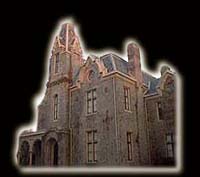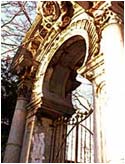Well everybody knows that I live in the birth place of America Philadelphia, and live 2 blocks away from where George Washington lived, so I feel blessed, I drive by Washington's house every single day, the Germantown neighborhood that I live in helped shape America, even the first meeting and slave protest happened 1 block from where I live. A revolutionary war was fought at the top of my block. The first english Bible in America was printed in Germantown. So on the 4th of July we really do it up big here. Went down to see the fireworks last night it was great.
but check my Germantown neighborhood out below
http://www.ushistory.org/germantown/
elcome to historic Germantown!
George Washington and the capital were here in 1793. During the Revolution, the Battle of Germantown was fought up and down the main street, with muskets firing from house windows. The first American Bible was published here, and the first kidnapping in the United States also took place in Germantown. The writer Louisa May Alcott was born here and the painter Gilbert Stuart worked in a small barn in Germantown.
merica's history lies in the cobblestones of Germantown Avenue, echoes through the halls of Stenton and Cliveden, and is forever captured in Germantown's historic buildings, homes, and cemeteries. An incredible amount of history took place in the distance of a few miles in this historic town, now part of Philadelphia.
ermantown became a big industrial town in the end of the 19th and beginning of the 20th centuries. Then in the 1940's and 50's the area's affluent citizens began to leave for the suburbs. Today, Germantown is undoubtedly a very urbanized region; however, the historical sites have been very well preserved by the active Historical Society and the National Park Service. Most are open to the public. Explore historic Germantown with this virtual tour.
http://www.freedomsbackyard.com/
The
Colonial Germantown Historic District is a designated
National Historic Landmark District in the
Germantown and
Mount Airy neighborhoods of
Philadelphia,
Pennsylvania along both sides of Germantown Avenue. This road followed an Indian path from the
Delaware River just north of
Old City Philadelphia, through Germantown, about 6 miles northwest of
Center City Philadelphia, and on to
Pottstown. Settlement in the Germantown area began, at the invitation of
William Penn, in 1683 by Nederlanders and Germans under the leadership of
Francis Daniel Pastorius fleeing religious persecution.<sup id="cite_ref-NPS_1-1" class="reference">
[2]</sup><sup id="cite_ref-NOM1_3-0" class="reference">
[4]</sup><sup id="cite_ref-NOM2_4-0" class="reference">
[5]</sup>
Colonial Germantown was a leader in religious thought, printing, and education. Important dates in Germantown's early history include:<sup id="cite_ref-Historic_5-0" class="reference">
[6]</sup>
- August 16, 1683, Pastorius arrives in Philadelphia
- October 25, 1683, Lots are drawn for land among Pastorius's followers and settlement begins
- 1688, first American anti-slavery protest published
- 1690, first paper-mill built in America is built near Germantown
- 1705, possibly the first portrait painted in oil in America painted by Christopher Witt in Germantown
- 1708, first Mennonite Meetinghouse in America built in Germantown
- 1719, first Dunkards in America arrive in Germantown
- 1743, first Bible printed in America in any European language (in this case German), printed by Christoph Sauer
- 1760, Germantown Academy founded
- 1762, invasion of the Paxton Boys
- 1770, first American book on pedagogy written by Christopher Dock and published in Germantown
- October 4, 1777, Battle of Germantown
- 1793, during the Philadelphia Yellow Fever Epidemic, President Washington and his cabinet move to Germantown
- 1794, Washington spends two months in Germantown to avoid the heat in Philadelphia
- July 20, 1825, General Lafayette visits Germantown
- June 6, 1832, railroad from Philadelphia to Germantown opens












